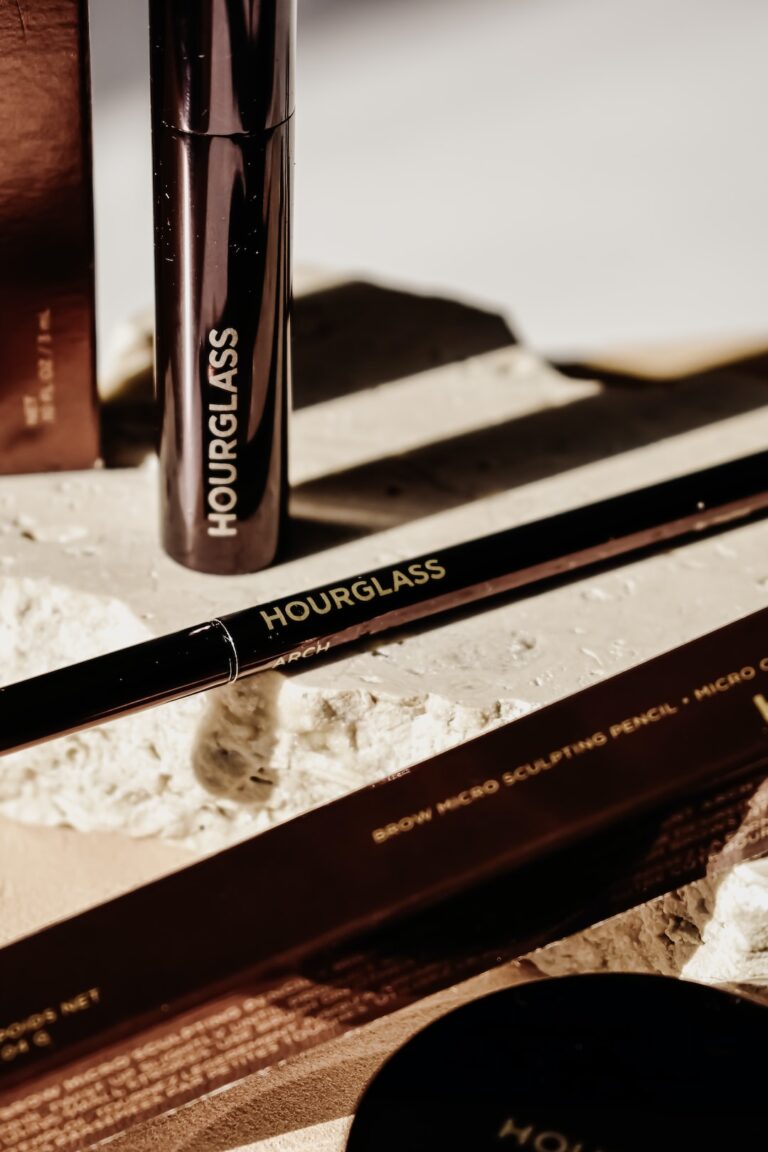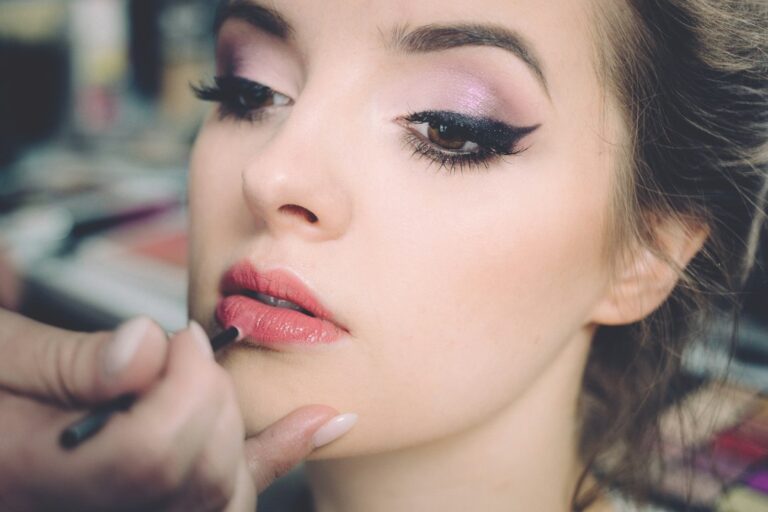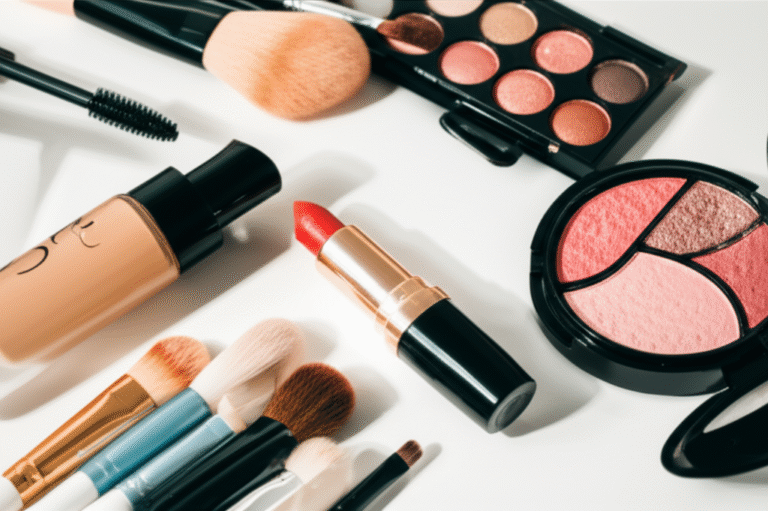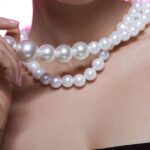Support our educational content for free when you purchase through links on our site. Learn more
What Are the 7 Different Levels of Makeup? 🎨 (2025 Guide)
Ever wondered why your friend’s makeup looks effortlessly flawless while yours feels like a patchy mess? Or why some makeup looks so natural it’s almost invisible, while others are bold enough to stop traffic? Welcome to the fascinating world of makeup levels—a concept that goes far beyond just “light” or “heavy” makeup. From the barely-there glow of the “no-makeup” look to the jaw-dropping artistry of theatrical prosthetics, makeup levels define how you express yourself, your skill, and your occasion.
Here’s a fun fact: the global cosmetics market hit over $429 billion in 2023, and the variety of makeup “levels” you can explore is mind-boggling! In this comprehensive guide, we’ll unpack the 7 different levels of makeup, decode what they mean, and share insider tips from our team of expert makeup artists, estheticians, and cosmetologists at Makeup Brands™. Curious about how to master the perfect dewy finish or whether airbrush makeup is worth the hype? Stick around—we’ve got you covered.
Key Takeaways
- Makeup levels span intensity, coverage, finish, and skill, shaping everything from a natural daytime look to avant-garde artistry.
- The 7 levels include: No-Makeup, Everyday Elegance, Special Occasion Glam, Theatrical/Avant-Garde, Sheer Coverage, Medium Coverage, and Full Coverage.
- Tools and techniques matter just as much as products—using the right brushes, sponges, and blending methods can elevate your look instantly.
- Tailor your makeup level to your skin type and occasion for the best results, whether you have oily, dry, or combination skin.
- Explore professional tips on airbrush makeup, contouring, and special effects to push your skills to the next level.
- Ready to shop? Check out top-rated foundations and tools from brands like Estée Lauder, Fenty Beauty, and Beautyblender to start your transformation today!
Table of Contents
- ⚡️ Quick Tips and Facts
- Unveiling the Layers: A Brief History of Makeup’s Evolution & Its Modern Interpretations 🕰️
- Decoding Makeup Levels: What Does “Level” Even Mean? 🤔
- The Spectrum of Makeup Intensity: From Barely There to Bold & Beautiful 🌈
- Understanding Coverage Levels: Building Your Perfect Canvas 🎨
- Mastering Finish Levels: From Luminous Dewy to Sophisticated Matte 🌟
- Skill Levels in Makeup Artistry: Your Journey from Novice to Pro MUA 🎓
- The Power of Tools & Techniques: How Application Elevates Your Makeup Level 🖌️
- Tailoring Your Levels: Navigating Makeup for Different Skin Types & Concerns 🧴
- Beyond the Face: Exploring Body Makeup, Special Effects & Prosthetics 🦵
- Professional Makeup Artistry vs. Personal Application: Decoding the Differences 💼
- Quick Tips for Elevating Your Makeup Game Instantly! 🚀
- Conclusion: Your Makeup Journey, Your Rules! 💖
- Recommended Links 🔗
- FAQ: Your Burning Makeup Questions Answered 🔥
- Reference Links 📚
Here is the main body content for your blog post, crafted by the expert team at Makeup Brands™.
⚡️ Quick Tips and Facts
Welcome, beauty lovers! Before we dive deep into the fabulous, layered world of makeup, let’s get you started with some quick-fire facts and pro tips from our team. Think of this as your makeup appetizer!
- The “Level” is Subjective: There’s no official rulebook! “Levels of makeup” can refer to coverage (sheer to full), intensity (natural to glam), or even your personal skill level.
- Skin Prep is Level Zero: The most flawless, high-level makeup application starts with a clean, hydrated canvas. Never, ever skip your skincare routine. It’s the non-negotiable foundation for your foundation!
- Coverage vs. Weight: Modern formulas are magical. You can now get full coverage that feels surprisingly lightweight. Brands like Estée Lauder with their Double Wear have perfected this.
- The Global Cosmetics Market is HUGE: It was valued at over USD 429 billion in 2023 and is still growing. You’re part of a massive, creative community!
- Tools Matter More Than You Think: Using a damp Beautyblender sponge versus a dense foundation brush can completely change the level of coverage and finish of the exact same product.
- HD Makeup Isn’t Just for TV: Originally designed to look seamless under high-definition cameras, HD makeup products from brands like MAKE UP FOR EVER use light-diffusing particles that are fantastic for creating a soft-focus, poreless look in real life, too.
- “Baking” Isn’t Just for Cakes: This technique, where you let translucent powder sit on your face for 5-10 minutes before dusting it off, is a pro-level trick to set concealer and foundation for a crease-proof, matte finish that lasts for hours.
Unveiling the Layers: A Brief History of Makeup’s Evolution & Its Modern Interpretations 🕰️
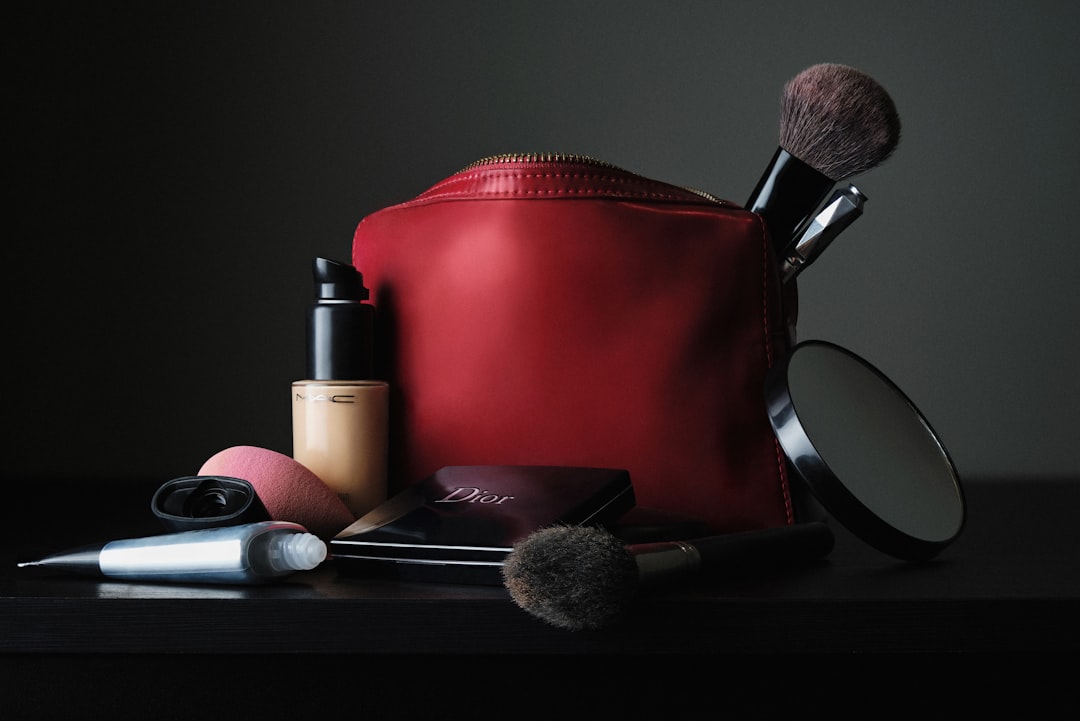
Oh, if these makeup brushes could talk! The stories they would tell. The concept of “levels” of makeup isn’t new; it’s as old as makeup itself. We’ve been layering, enhancing, and transforming for millennia.
Let’s hop in our beauty time machine. First stop: Ancient Egypt, circa 4000 BCE. Here, makeup wasn’t just for aesthetics; it was a high-level spiritual and status symbol. Both men and women of all social classes wore heavy kohl eyeliner and green malachite eyeshadow. The goal? To ward off the evil eye and appeal to the gods. Talk about a powerful look! This was, in essence, the original full-glam, high-intensity level of makeup.
Fast forward through the Roman empire (where cosmetics were sometimes viewed with suspicion) to the Elizabethan Era. A stark white face, achieved with a dangerous lead-based paint called ceruse, was the ultimate status symbol. It signified wealth, as it meant you didn’t have to work in the sun. This was a level of makeup that was less about beauty and more about broadcasting social standing.
The 20th century is where things really got cooking, giving birth to the cosmetics industry we know and love today.
- 1920s: The flapper era brought us the dramatic, smokey eye and the “Cupid’s bow” lip, a rebellious and bold level of makeup.
- 1950s: Icons like Marilyn Monroe made the classic winged liner and bold red lip the gold standard for glamour.
- 1980s: More was more! Bright blue eyeshadow, heavy blush draping, and bold lips were the norm. This was a level of unapologetic, vibrant expression.
Today, we’re in a golden age. As the team at L Factor Cosmetics notes, makeup is “a form of art and expression.” We have access to every style imaginable. You can rock a minimalist “no-makeup” look for a coffee run and a full-on theatrical look for a night out.
Interestingly, the quest for a flawless base has even evolved beyond topical products. Many now combine their makeup routines with non-surgical cosmetic procedures. As the American Board of Cosmetic Surgery explains, treatments like dermal fillers can restore volume and smooth lines, creating a perfect canvas before a single drop of foundation is even applied. It’s a fascinating intersection of science and beauty, representing a whole new “level” of cosmetic enhancement.
Decoding Makeup Levels: What Does “Level” Even Mean? 🤔
So, you’ve heard people talk about “levels” of makeup, but what does that actually mean? Is there a secret handbook we’ve been hiding? (Spoiler: no, but this article is the next best thing!).
Here at Makeup Brands™, we break it down into four key categories. When someone talks about a makeup “level,” they’re usually referring to one of these aspects:
- The Spectrum of Intensity: This is about the overall impact and occasion. It ranges from a “no-makeup” makeup look that whispers, to a full-glam look that screams. It’s the difference between makeup for the office and makeup for the opera.
- The Coverage Level: This is all about your base. It refers to how much of your natural skin is visible through your foundation and concealer. Are you going for a sheer tint or a completely flawless, opaque canvas?
- The Finish Level: This describes the texture and sheen of your makeup. Is your skin glowing and dewy like you just walked out of a spa, or is it velvety and matte like a rose petal?
- The Skill Level: This one’s about you! It refers to the complexity of the techniques and artistry involved, from a beginner’s simple routine to a professional MUA’s advanced creations.
Think of these as the four main dials you can turn up or down to create any look you can dream of. Ready to become the master of your own makeup control panel? Let’s go!
The Spectrum of Makeup Intensity: From Barely There to Bold & Beautiful 🌈
This is the most common way people think about makeup levels. It’s all about the vibe, the occasion, and the statement you want to make. Let’s walk through the spectrum, from a whisper to a roar.
1. Level Up Your Look: The “No-Makeup” Makeup – Effortless Radiance ✨
This is the art of looking like you’re not wearing makeup, but better. It’s the ultimate “I woke up like this” fantasy. The goal, as noted by L Factor Cosmetics, is a “natural, flawless appearance.” It’s one of our most requested looks for clients who want to look polished and fresh without appearing “made up.”
- The Goal: To subtly even out skin tone, brighten the eyes, and add a hint of healthy color. Your skin, but on its best day.
- Key Techniques: Minimal product, maximum blending. Focus on spot-concealing rather than applying a full face of foundation. Cream products are your best friend here as they melt into the skin.
- Essential Products:
- Tinted Moisturizer or Skin Tint: Provides a sheer wash of color. We adore the Fenty Beauty Eaze Drop Blurring Skin Tint for its lightweight feel.
- Cream Blush: A dab of cream blush on the apples of the cheeks gives a natural, youthful flush. Try the Glossier Cloud Paint.
- Brow Gel: A clear or tinted brow gel like Anastasia Beverly Hills Clear Brow Gel tames and defines brows without harsh lines.
- Lip Balm or Tint: A hydrating balm or a sheer tint like the Burt’s Bees Tinted Lip Balm is perfect.
✅ Perfect for: Everyday wear, running errands, casual weekends, the office.
❌ Not for: A black-tie gala or a dramatic photoshoot.
2. Everyday Elegance: Your Go-To Glam Routine for Daily Life 💅
This is Level 1’s sophisticated older sister. It’s a noticeable, polished look that’s still appropriate for most daytime settings. You look put-together and confident. This is the level where most people’s daily makeup routine lives.
- The Goal: To create a balanced and defined look. Think even skin, defined eyes, and a classic lip.
- Key Techniques: This is where you introduce more structured elements. You might use a medium-coverage foundation, a simple one-or-two-shadow eye look, and a soft eyeliner.
- Essential Products:
- Medium-Coverage Foundation: Something like the NARS Natural Radiant Longwear Foundation provides coverage while still looking like skin.
- Neutral Eyeshadow Palette: A palette with versatile mattes and shimmers is a must. The Urban Decay Naked palettes are iconic for a reason.
- Mascara: A good mascara to lengthen and volumize is key. We often reach for L’Oréal’s Voluminous Lash Paradise in our kits.
- Satin or Cream Lipstick: A “my lips but better” shade in a comfortable formula, like the MAC Cosmetics Satin Lipstick in “Faux”.
3. Special Occasion Slay: Glammed Up & Ready for the Spotlight 🌟
Now we’re turning the dial way up! This is for weddings, parties, proms, and any event where you want to make an entrance. It’s about drama, definition, and longevity. Think “red carpet ready.”
- The Goal: A flawless, long-lasting, and impactful look. Features are sculpted, eyes are dramatic, and lips are bold.
- Key Techniques: This level involves more advanced techniques like contouring and highlighting, false lashes, winged eyeliner, and often a “baked” undereye to ensure it lasts all night.
- Essential Products:
- Full-Coverage Foundation: You need a base that won’t budge. Estée Lauder Double Wear is a holy grail for our pro kits.
- Contour & Highlight Palette: To sculpt and add dimension. The Kat Von D Shade + Light Contour Palette is a classic.
- Bold Eyeshadow & Eyeliner: This is the time for smokey eyes, glitter, or a sharp liquid liner like the Stila Stay All Day Waterproof Liquid Eye Liner.
- False Lashes: Lashes elevate any glam look. Brands like Ardell and Lilly Lashes offer a huge variety.
- Setting Spray: An absolute must to lock everything in place. The Urban Decay All Nighter Setting Spray is legendary.
4. Theatrical & Avant-Garde: Makeup as Performance Art 🎭
Welcome to the highest level of intensity. This is makeup that transcends beauty and becomes art. It’s for the stage, editorial photoshoots, Halloween, or simply for expressing pure creativity. The rules? There are no rules.
- The Goal: Transformation and expression. The face is a canvas for a character, a concept, or an abstract design.
- Key Techniques: This involves everything from body painting and special effects (SFX) to using unconventional materials like feathers, crystals, and prosthetics.
- Essential Products:
- Professional Palettes: Highly pigmented creams and paints are essential. Mehron and Kryolan are the go-to brands for professional artists.
- SFX Materials: Think liquid latex, scar wax, and spirit gum for creating textures and effects.
- Cosmetic Grade Glitter & Pigments: For high-impact, artistic effects.
- Prosthetics: For completely altering facial features.
This level is less about enhancing and more about creating something entirely new. It’s the ultimate playground for any makeup artist!
Understanding Coverage Levels: Building Your Perfect Canvas 🎨
Now let’s talk about the foundation of your look—literally! The level of coverage you choose for your base makeup is one of the most critical decisions you’ll make. It dictates the entire feel of your look.
| Feature | Sheer Coverage | Medium Coverage | Full Coverage |
|---|---|---|---|
| Look & Feel | Natural, skin-like, dewy | Polished, even-toned, satin | Flawless, airbrushed, matte/satin |
| Hides… | Minor redness, dullness | Uneven tone, redness, small blemishes | Acne, scarring, hyperpigmentation |
| Lets Through… | Freckles, beauty marks, skin texture | Some freckles, minor texture | Very little to none |
| Best For | “Good skin” days, minimalists | Daily wear, most skin types | Special events, photos, problem skin |
| Example Products | Ilia Super Serum Skin Tint, Glossier Perfecting Skin Tint | NARS Sheer Glow Foundation, Armani Luminous Silk Foundation | Estée Lauder Double Wear, Huda Beauty #FauxFilter Foundation |
1. Sheer Coverage: Your Skin, But Enhanced! 💧
Sheer coverage is your BFF if you love a natural look. It won’t hide everything, and that’s the point! It just evens things out a bit, adds a touch of glow, and makes you look refreshed. Think of it as a filter for your face. It’s a cornerstone of the Natural Makeup look.
2. Medium Coverage: The Sweet Spot for Balanced Perfection ⚖️
This is the versatile workhorse of the foundation world. It covers most imperfections like redness and minor blemishes but still allows your skin to look like skin. The best part? It’s buildable. You can apply a light layer for a more natural look or build it up in areas where you need more coverage. Most of our clients find their holy grail foundation in this category.
3. Full Coverage: The Ultimate Flawless Foundation 💯
When you want a completely blank canvas, full coverage is your answer. It’s designed to cover everything—acne, dark spots, scarring, you name it. A little goes a very long way! The trick to making full coverage look good and not like a mask is meticulous blending and ensuring your skin is well-hydrated beforehand. This is the level required for most bridal and HD makeup looks.
👉 Shop Foundations by Coverage:
- Sheer: Ilia Super Serum Skin Tint | Glossier Official Website
- Medium: NARS Sheer Glow Foundation | Armani Luminous Silk Foundation
- Full: Estée Lauder Double Wear | Huda Beauty #FauxFilter Foundation
Mastering Finish Levels: From Luminous Dewy to Sophisticated Matte 🌟
Coverage is what you hide, but finish is what you show. The finish of your makeup dramatically affects the overall “level” and style. Are you a glow-getter or a matte maven?
1. The Luminous Dewy Finish: Get Your Glow On! ✨
A dewy finish mimics the look of healthy, hydrated, luminous skin. It reflects light, giving you a youthful and radiant glow. As the team at Recode Studios points out, the goal is a “fresh, hydrated appearance with a radiant sheen.”
- Best For: Dry or mature skin types, as it adds the look of moisture.
- Achieve it with: Illuminating primers, liquid highlighters mixed into foundation, and setting sprays with a dewy finish.
- Star Products: Charlotte Tilbury Hollywood Flawless Filter (a cult favorite in our kits!), Saie Glowy Super Gel.
2. The Sophisticated Matte Finish: Shine-Free & Chic 🖤
A matte finish has no shine or reflection. It provides a velvety, soft-focus, and often “airbrushed” look. It’s sophisticated, modern, and fantastic for controlling oil.
- Best For: Oily or combination skin types, as it absorbs excess oil and minimizes the appearance of pores.
- Achieve it with: Mattifying primers, matte foundations, and setting powders.
- Star Products: Fenty Beauty Pro Filt’r Soft Matte Longwear Foundation, Laura Mercier Translucent Loose Setting Powder.
3. The Versatile Satin Finish: The Best of Both Worlds 💫
Can’t decide? You don’t have to! A satin finish (sometimes called “natural” or “demi-matte”) is the perfect in-between. It has a slight luminosity but isn’t overtly shiny or flat. It looks the most like natural, healthy skin.
- Best For: Literally all skin types. It’s the universal crowd-pleaser.
- Achieve it with: Most “natural finish” foundations fall into this category. It’s all about finding a balanced formula.
- Star Products: Armani Luminous Silk Foundation (despite the name, it has a perfect satin finish), Dior Backstage Face & Body Foundation.
4. Exploring Other Finishes: Natural, Radiant, Velvet & More! 🌈
The world of beauty brands is always innovating! You’ll see many terms to describe finishes. “Radiant” is often a step up from dewy, with more noticeable shimmer. “Velvet” is a type of soft matte. Don’t be afraid to experiment! A great tip from our estheticians: you can mix finishes! Use a matte foundation in your oily T-zone and a dewy one on your cheeks for a customized, multi-dimensional look.
Skill Levels in Makeup Artistry: Your Journey from Novice to Pro MUA 🎓
The “level” of makeup isn’t just about the products; it’s about the hands that apply them. Your skill level determines the complexity and precision of the looks you can create. Everyone starts somewhere, so let’s map out the journey.
1. Beginner Basics: Laying the Foundation for Flawless Application 🏗️
Welcome to the club! At this level, the focus is on mastering the fundamentals. It’s about building good habits and getting comfortable with the core products.
- Skills to Master:
- Proper skin prep (cleansing, moisturizing).
- Finding your correct foundation shade.
- Basic application of foundation, concealer, powder, blush, and mascara.
- Simple, one-color eyeshadow looks.
- Applying lipstick neatly.
- Helpful Resources: Our Makeup for Beginners section is packed with guides to get you started! We also love the easy-to-use formulas found in drugstore makeup for practice.
2. Intermediate Techniques: Elevating Your Makeup Game 🚀
You’ve got the basics down, and now you’re ready to play. This level is about adding dimension, precision, and creativity to your looks.
- Skills to Master:
- Soft contouring and highlighting.
- Blending multiple eyeshadow shades seamlessly.
- Creating a classic winged eyeliner.
- Filling in and shaping eyebrows.
- Applying false lashes (strip lashes).
- Color correcting for concerns like dark circles or redness.
3. Advanced Artistry: Pushing the Boundaries of Creativity 🎨
This is pro-level territory. Advanced artists understand the “why” behind every technique. They can work on any face shape, skin tone, or texture and can execute complex, artistic, and transformative looks.
- Skills to Master:
- Dramatic contouring and “baking.”
- Complex eye looks like the cut crease, halo eye, and graphic liner.
- Perfecting skin for HD cameras (as seen in HD and Bridal makeup).
- Working with cream and liquid products for editorial looks.
- Special Effects (SFX) makeup, including creating wounds, aging effects, and applying prosthetics.
No matter your current skill level, the key is to practice, play, and never stop learning!
The Power of Tools & Techniques: How Application Elevates Your Makeup Level 🖌️
You can have the most expensive, luxurious makeup in the world, but if you apply it with the wrong tools or techniques, it just won’t look right. The how is just as important as the what. This is where you can truly elevate your makeup game from one level to the next.
Brushes, Sponges, and Fingers: Choosing Your Weapon of Choice 🛠️
Each application method gives a different result, effectively changing the “level” of your finish.
- Fingers: ✅ Great for warming up cream products and getting a sheer, melted-in finish. ❌ Can be streaky with liquid foundation and isn’t very precise.
- Sponges (e.g., Beautyblender): ✅ Perfect for a seamless, airbrushed, skin-like finish. A damp sponge sheers out product slightly and pushes it into the skin. ❌ Can absorb a lot of product.
- Brushes: ✅ Offer the most control and variety. A dense kabuki brush gives full coverage, while a fluffy stippling brush gives a lighter application. ❌ Can leave streaks if not used correctly.
Pro Tip: We often use all three on a single client! Fingers to apply primer, a brush to place foundation, and a damp sponge to blend it all out for a flawless finish.
Blending, Layering, and Setting: The Secrets to a Seamless Look 🤫
These three techniques are the holy trinity of a high-level makeup application.
- Blending: The #1 rule of makeup! Unblended makeup is the fastest way to look like a beginner. Blend until your hands hurt, then blend some more. This applies to everything from foundation to eyeshadow to contour.
- Layering: Instead of applying one thick, heavy layer of foundation, apply a thin layer, assess, and then add more only where needed. This creates coverage that looks natural, not cakey.
- Setting: If you want your makeup to last, you must set it. A light dusting of powder sets liquids and creams, while a setting spray melts all the layers together and locks them in for hours.
Airbrush Makeup: Is It the Ultimate Level of Perfection? 💨
You’ve probably heard of airbrush makeup, especially for brides. It involves spraying a fine mist of foundation onto the skin using an airbrush gun. As Recode Studios mentions, it provides a “flawless finish with a lightweight feel.”
- Pros: ✅ Creates an incredibly smooth, even, and long-lasting finish. It’s fantastic for on-camera work.
- Cons: ❌ Requires special equipment (Temptu is a popular brand) and a lot of practice. It can be difficult to touch up and may cling to dry patches if skin isn’t prepped perfectly.
Is it the ultimate level? For certain situations, yes! But a skilled artist can create an equally flawless look with traditional tools. It’s just another amazing technique to have in the arsenal.
Tailoring Your Levels: Navigating Makeup for Different Skin Types & Concerns 🧴
Here’s a secret from our team of estheticians: the best makeup artists are also skincare experts. Understanding how to adapt your makeup “level” to different skin types is crucial for a beautiful application. You can’t just slap a matte, full-coverage foundation on dry, flaky skin and expect it to look good.
Here’s a quick guide to tailoring your levels:
-
For Oily Skin:
- Coverage/Finish: Lean towards medium-to-full coverage with a matte or satin finish. This will help control shine and last longer.
- Technique: Use a mattifying primer in the T-zone. “Baking” under the eyes and in oily areas can be a game-changer.
- Avoid: Overly dewy or luminous products, which can make you look greasy instead of glowy.
-
For Dry Skin:
- Coverage/Finish: Opt for sheer-to-medium coverage with a dewy or radiant finish. This will add the illusion of hydration and light.
- Technique: Skin prep is EVERYTHING. Use a rich moisturizer and a hydrating primer. Cream blushes and highlighters will look much more natural than powders.
- Avoid: Heavy powders and super-matte foundations, which can emphasize dry patches and fine lines.
-
For Combination Skin:
- Coverage/Finish: You’re the master of mixing! A satin finish is often your best bet.
- Technique: Use the “multi-foundation” trick. Apply a mattifying primer/foundation to your oily T-zone and a more hydrating formula to the drier parts of your face.
- Avoid: A one-size-fits-all approach. Treat each area of your face according to its needs.
-
For Acne-Prone or Textured Skin:
- Coverage/Finish: It’s tempting to go for the highest level of coverage, but this can sometimes emphasize texture. A buildable medium coverage is often better.
- Technique: Spot-conceal blemishes with a high-coverage concealer after applying a thinner layer of foundation. A light dusting of a finely milled powder can create a soft-focus effect.
- Avoid: Shimmery or glittery products on textured areas, as the light reflection will draw attention to them.
Beyond the Face: Exploring Body Makeup, Special Effects & Prosthetics 🦵
Who said makeup has to stop at the jawline? The most advanced levels of makeup artistry venture into transforming the entire body.
-
Body Makeup: This is a lifesaver for covering tattoos, scars, varicose veins, or simply evening out the skin tone on the décolletage, arms, and legs for a special event. Brands like Dermablend are famous for their high-coverage, transfer-resistant body foundations. It’s the secret weapon for many red-carpet looks!
-
Special Effects (SFX): This is where makeup becomes movie magic. SFX artists use a wild array of products—scar wax, liquid latex, fake blood, and specialized cream paints—to create realistic injuries, fantasy creatures, and aging effects. It’s a highly technical skill that requires a deep understanding of anatomy and materials.
-
Prosthetics: This is the pinnacle of transformative makeup. It involves applying pre-made silicone or foam latex pieces to completely alter a person’s facial structure. Think of the incredible transformations you see in sci-fi and fantasy films. This level requires immense skill in sculpting, molding, applying, and blending the pieces seamlessly into the skin.
Exploring these areas shows just how vast and creative the world of makeup can be, pushing the “levels” to their absolute limits.
Professional Makeup Artistry vs. Personal Application: Decoding the Differences 💼
Ever wonder why makeup done by a pro often looks and feels different? It’s because the “level” of application changes based on the context. There’s a big difference between doing your own makeup for work and having a professional artist prep you for a wedding or photoshoot.
Let’s break down the key differences:
| Aspect | Personal Daily Makeup | Professional Makeup Application |
|---|---|---|
| Primary Goal | Quick, easy enhancement for the day. | Longevity, flawlessness, and performance (for camera or event). |
| Products Used | Consumer-grade products, often focused on ease of use (drugstore or high-end). | Pro-grade products (e.g., MAC Pro, Kryolan), chosen for high pigmentation and durability. |
| Techniques | Simpler techniques: basic blending, one-step application. | Advanced techniques: color theory, custom blending shades, strategic layering, baking, airbrushing. |
| Sanitation | Personal use of brushes and products. | Strict hygiene protocols: sanitizing products, using disposable applicators, deep cleaning brushes between clients. |
| Time | Typically 5-20 minutes. | Can be 45 minutes to 2+ hours, depending on the complexity. |
| Lighting | Usually done in bathroom or natural light. | Done under controlled, often bright lighting to ensure perfection from every angle. |
As pros, we’re not just applying makeup; we’re problem-solving. We’re thinking about how the makeup will wear for 12+ hours, how it will look under flash photography, and how to best enhance a client’s specific features. It’s a different level of intention and execution.
Quick Tips for Elevating Your Makeup Game Instantly! 🚀
Ready to level up right now? Here are some of our team’s favorite, easy-to-implement tips that make a huge difference.
- Curl Your Lashes: It takes 10 seconds and makes you look instantly more awake. It’s the single most impactful, low-effort step you can take.
- Use Two Shades of Concealer: Use one that matches your skin tone to cover blemishes, and another that is 1-2 shades lighter for brightening under the eyes. This creates dimension and avoids a flat look.
- Warm Up Your Mascara: Before you apply it, stick your mascara tube in your bra or pocket for a few minutes. The warmth makes the formula apply more smoothly and with fewer clumps. It’s an old-school MUA trick!
- Apply Blush Higher: Instead of just on the apples of your cheeks, sweep your blush up towards your temples. This gives your face an instant, youthful lift.
- Invest in a Great Setting Spray: A good setting spray like the Charlotte Tilbury Airbrush Flawless Setting Spray is like a magic top coat. It melts powders into the skin, gets rid of any “cakey” look, and locks everything in place.
- Clean Your Brushes: We can’t say this enough! Dirty brushes harbor bacteria and apply makeup unevenly. A quick wash can dramatically improve your application. Check out our beauty tips for the best way to do it
Conclusion: Your Makeup Journey, Your Rules! 💖
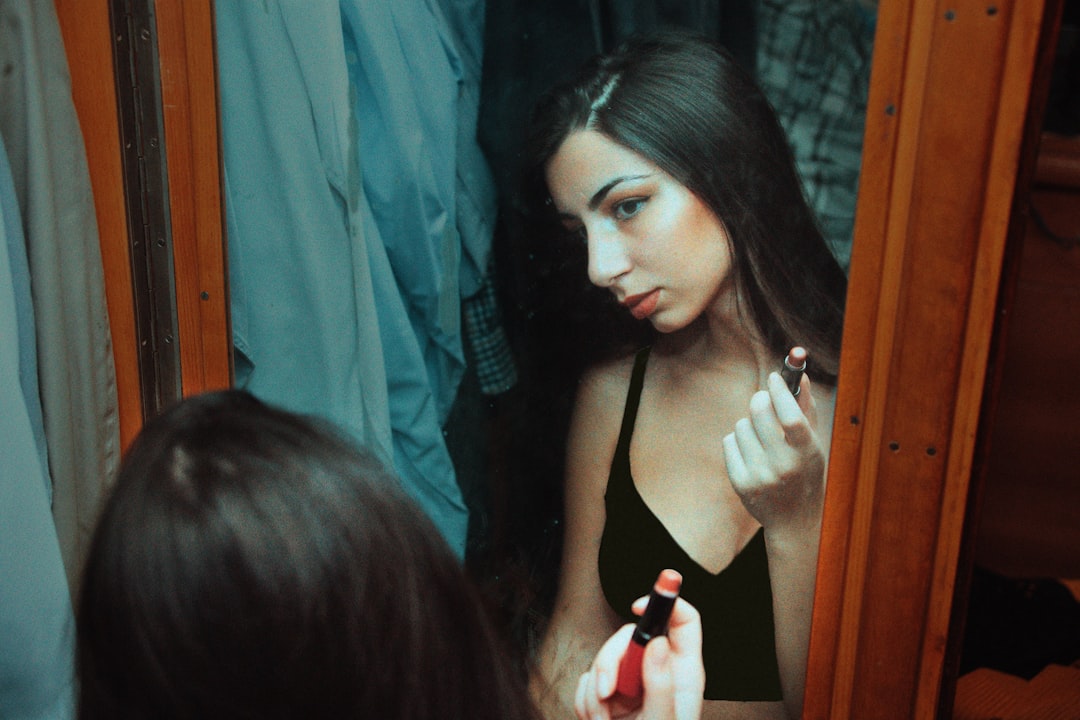
Wow, what a ride through the dazzling world of makeup levels! From the subtle art of the “no-makeup” makeup to the theatrical extravaganza of prosthetics and special effects, we’ve covered the full spectrum of what “levels” really mean in makeup. Remember, the level you choose is entirely up to you — your mood, your occasion, your skin, and your creativity.
We resolved the mystery of what “levels” mean: it’s a combination of intensity, coverage, finish, and skill. Whether you’re a beginner mastering the basics or an advanced artist pushing boundaries with airbrush and SFX, there’s a place for you in this vibrant community.
Our expert team at Makeup Brands™ encourages you to experiment boldly, learn continuously, and most importantly, enjoy the process. Makeup is a powerful tool for self-expression, confidence, and fun — so own your level and rock it like a pro!
If you’re wondering about the ultimate flawless base, remember that skin prep and choosing the right coverage and finish are your secret weapons. And don’t forget: tools and technique can elevate your look from good to jaw-dropping.
Ready to dive deeper? Check out the recommended products and resources below to start or upgrade your makeup journey today!
Recommended Links 🔗
Here are some of our top picks and resources to help you explore the different levels of makeup with confidence and style:
Shop Foundations by Coverage Level
- Sheer Coverage:
- Medium Coverage:
- Full Coverage:
Must-Have Makeup Tools
- Beautyblender Original Sponge on Amazon
- Anastasia Beverly Hills Clear Brow Gel
- Urban Decay All Nighter Setting Spray
Pro-Grade Makeup Brands for Advanced Looks
Recommended Books on Makeup Artistry
- Face Paint: The Story of Makeup by Lisa Eldridge — A beautifully illustrated history and guide to makeup artistry.
- Making Faces by Kevyn Aucoin — A classic for learning contouring and highlighting techniques.
- The Art of Makeup by Kevyn Aucoin — For advanced artistry and creative inspiration.
FAQ: Your Burning Makeup Questions Answered 🔥
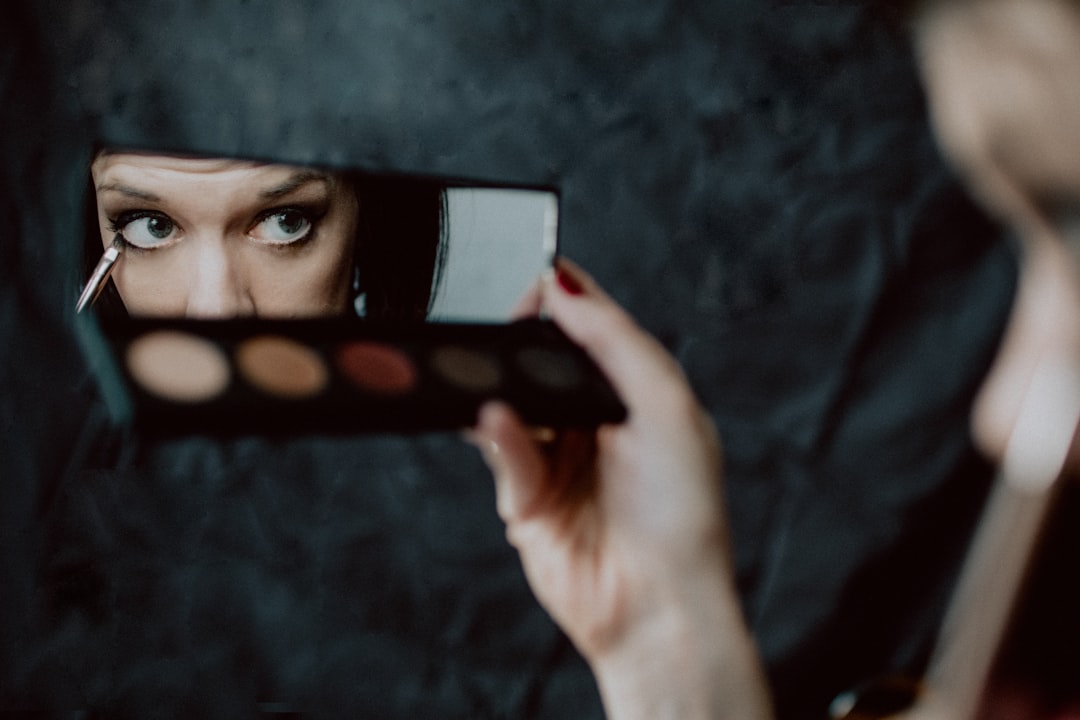
What are the basics of natural everyday makeup for beginners?
Natural everyday makeup is all about enhancing your features without looking overdone. Beginners should focus on:
- Skin prep: Cleanse, moisturize, and apply a lightweight primer.
- Base: Use a tinted moisturizer or sheer foundation to even out skin tone.
- Concealer: Spot conceal under eyes and blemishes.
- Brows: Lightly fill and groom with a tinted brow gel.
- Eyes: Apply a neutral eyeshadow or just mascara.
- Cheeks: Use a cream blush for a natural flush.
- Lips: Finish with a tinted balm or nude lipstick.
This approach is forgiving, quick, and builds confidence. For detailed beginner guides, visit our Makeup for Beginners section.
Read more about “10 Easy-to-Use Makeup Brands for Beginners You’ll Love in 2025 💄”
How do I choose the right type of makeup for my skin type and tone?
Choosing makeup that suits your skin type and tone is essential for a flawless finish and comfort:
- Dry skin: Opt for hydrating, dewy-finish foundations and cream products.
- Oily skin: Choose mattifying, long-wear formulas with a matte or satin finish.
- Combination skin: Use different products on different areas (e.g., matte T-zone, dewy cheeks).
- Sensitive skin: Look for fragrance-free, hypoallergenic products.
- Skin tone: Always test foundation shades in natural light on your jawline. Brands like Fenty Beauty offer extensive shade ranges for all undertones.
Our estheticians recommend patch testing new products and consulting shade-matching tools available at most beauty retailers.
What is the difference between editorial, bridal, and special effects makeup?
- Editorial Makeup: Created for fashion magazines and photoshoots. It’s artistic, often avant-garde, and designed to photograph well. It may include bold colors, unusual textures, and dramatic shapes.
- Bridal Makeup: Focuses on longevity, natural radiance, and enhancing the bride’s features for both photos and in-person events. Waterproof and long-wear products are staples here.
- Special Effects (SFX) Makeup: Used in film, theater, and Halloween. It involves prosthetics, fake wounds, aging effects, and fantasy characters. It requires specialized skills and materials.
Each type demands different products, techniques, and skill levels.
Read more about “15 Best Professional Makeup Brands to Know in 2025 💄”
Can I learn advanced makeup techniques, such as contouring and highlighting, at home?
Absolutely! With dedication and the right resources, you can master advanced techniques at home.
- Start with quality tutorials: Many professional MUAs share step-by-step videos on YouTube and Instagram.
- Practice: Contouring and highlighting require blending skills and understanding your face shape.
- Invest in good tools: Brushes, sponges, and palettes designed for contouring make a huge difference.
- Take online courses: Platforms like MasterClass and Skillshare offer professional makeup courses.
- Experiment: Use your face as a canvas and try different looks to see what works best.
Our Beauty Tips section is packed with expert advice to help you level up your skills.
How does airbrush makeup compare to traditional application methods?
Airbrush makeup provides a lightweight, flawless finish by spraying a fine mist of foundation. It’s ideal for weddings and photography but requires special equipment and skill. Traditional methods (brushes, sponges, fingers) are more accessible and versatile for everyday use. Both have their place depending on your needs and skill level.
Are there makeup products that work well for sensitive or acne-prone skin?
Yes! Look for:
- Non-comedogenic and oil-free formulas.
- Products labeled hypoallergenic and dermatologist-tested.
- Mineral makeup, which often contains fewer irritants.
- Brands like Clinique, La Roche-Posay, and BareMinerals specialize in sensitive skin-friendly products.
Always patch test new products and consult a dermatologist if you have severe skin concerns.
Read more about “The Ultimate Makeup Brands List A-Z: 100+ Must-Know Names (2025) 💄”
Reference Links 📚
- Grand View Research: Cosmetics Market Report
- Recode Studios: Different Types of Makeup Styles
- L Factor Cosmetics: Types of Makeup Looks
- American Board of Cosmetic Surgery: Injectable Dermal Fillers Guide
- Estée Lauder Double Wear Foundation
- Fenty Beauty Official Website
- Glossier Official Website
- Urban Decay Official Website
- Charlotte Tilbury Official Website
- Mehron Professional Makeup
- Kryolan Professional Makeup
Thanks for joining us on this makeup mastery journey! Remember, your makeup level is your playground—explore it boldly and beautifully. 💄✨

